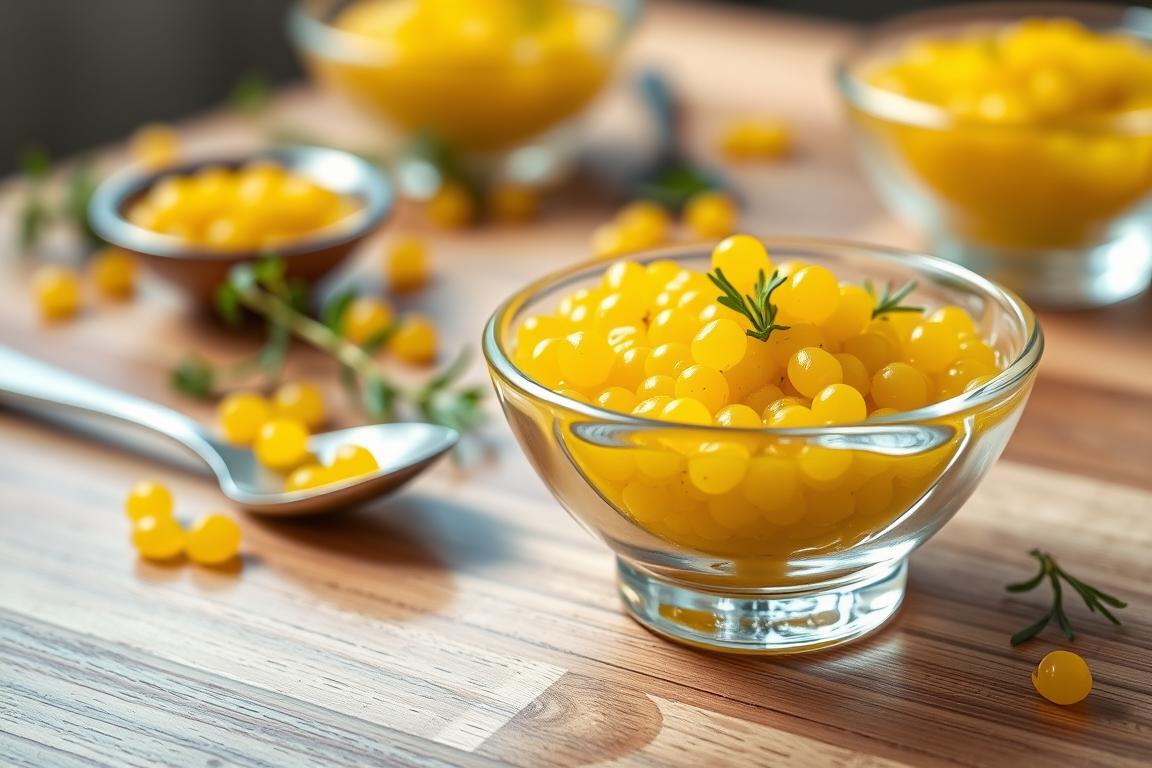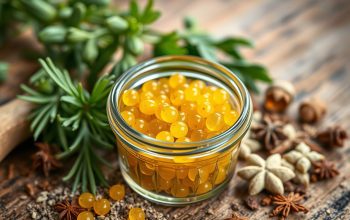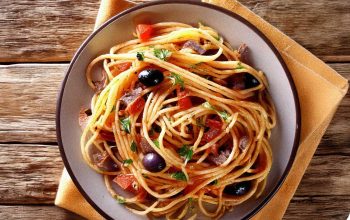Mustard caviar is a new favorite in gourmet food. It turns simple mustard seeds into tiny, caviar-like pearls. This adds elegance to many dishes. It’s perfect for both professional chefs and home cooks.
It started with creative chefs and quickly won over food lovers. Mustard caviar adds a strong yet balanced flavor to dishes. It’s a key ingredient in today’s kitchens, making food look and taste amazing.
This guide will explore mustard caviar and how to make it at home. You’ll learn about its history, taste, and how to make it. It’s great for impressing guests or making your meals special.
What is Mustard Caviar?
Mustard caviar is a unique condiment that has won the hearts of Specialty Foods lovers everywhere. It turns simple mustard seeds into a caviar-like treat. This transformation brings a mix of flavors and textures that make any dish better.
A Brief History of the Condiment
The story of mustard caviar starts in France, where chefs love to try new things. They aim to explore new Flavor Explorations. Its popularity has grown, with chefs and home cooks loving its taste and versatility.
Flavor Profile and Unique Qualities
Mustard caviar has a special taste that’s different from regular caviar. The mustard seeds give it a strong, pungent flavor. This is balanced by sweeteners and other seasonings.
The result is a unique feel in your mouth. The caviar-like beads burst with a mix of heat, tanginess, and sweetness.
| Flavor Characteristic | Description |
|---|---|
| Pungency | The inherent heat and sharpness of the mustard seed creates an intriguing contrast. |
| Sweetness | The addition of honey or sugar helps to balance the mustard’s intensity. |
| Texture | The caviar-like beads provide a unique mouthfeel, bursting with flavor. |
Mustard caviar is incredibly versatile in the kitchen. It’s a key Specialty Food for any serious cook or food lover. It can make many dishes better, from meats and seafood to salads and veggies. This makes it a true gem in Flavor Explorations.
Ingredients Needed for Homemade Mustard Caviar
Making tasty Artisanal Products like mustard caviar at home needs the right ingredients. You’ll need the perfect mustard and sweetener. Each part is key to getting the right taste and texture. Let’s look at what you need to make your own tasty Sustainable Caviar at home.
Mustards: Types and Recommendations
The base of mustard caviar is, of course, mustard. But not all mustards are the same. Here are some types and what they bring to the table:
- Yellow Mustard: A mild and slightly tangy choice.
- Dijon Mustard: It has a bold, pungent taste that adds depth.
- Whole Grain Mustard: It has whole mustard seeds for a satisfying texture and flavor.
Sweeteners: Honey vs. Sugar
To balance the mustard’s sharpness, a bit of sweetness is added. Honey and sugar are common choices. Each has its own flavor:
- Honey: It adds natural sweetness and floral notes that complement the mustard.
- Sugar: It creates a straightforward, classic flavor.
Other Flavor Enhancers
There are more ingredients to add to your mustard caviar. These can make it taste and smell even better. Here are some options:
| Ingredient | Contribution |
|---|---|
| Vinegar | It adds a tangy note to balance the sweetness. |
| Spices | Like black pepper, paprika, or cayenne, for a touch of heat. |
| Herbs | Fresh or dried herbs like thyme, dill, or chives add aromatic complexity. |
With these ingredients, you’re ready to make your own unique Artisanal Products and Sustainable Caviar at home.
Step-by-Step Guide to Making Mustard Caviar
Making your own mustard caviar at home is fun. It lets you explore the world of Gourmet Condiments. Let’s go through the steps to make this tasty condiment.
Preparing Your Ingredients
First, get your ingredients ready: high-quality mustard seeds, your favorite sweetener (like honey or sugar), and any extra flavorings. Make sure everything is clean and ready for your cooking adventure.
Cooking Process: Technique and Timing
In a small saucepan, mix the mustard seeds, sweetener, and any seasonings you like. Heat it gently, stirring all the time, until it turns syrupy. This usually takes 10-15 minutes on low to medium heat. Watch it closely to avoid it getting too thick.
Cooling and Setting
When the mustard caviar is just right, take it off the heat. Let it cool down completely. This cooling is key for it to set and get that caviar texture. Let it rest for at least 30 minutes, or until it’s room temperature and has its shape.
With these easy steps, you can make your own mustard caviar. It’s a great addition to your Gourmet Condiment collection.
Ideas for Serving Mustard Caviar
Mustard caviar is a versatile and flavorful condiment. It can elevate many dishes. From meats and seafood to salads and vegetables, it offers a unique culinary experience. This specialty food celebrates the distinct Flavor Explorations of mustard.
Pairing with Meats and Seafood
The savory and slightly tangy notes of mustard caviar are perfect for meats and seafood. Try it on a juicy steak or pork tenderloin for a delightful contrast. For seafood lovers, it pairs beautifully with pan-seared salmon, seared scallops, or shrimp cocktail. It adds a gourmet touch to your Specialty Foods.
Enhancing Salads and Vegetables
Mustard caviar can turn a simple salad into a masterpiece. Sprinkle it over a fresh green salad or mix it into a creamy dressing. For vegetable dishes, it elevates roasted Brussels sprouts, grilled asparagus, or baked potatoes. It provides a unique and tantalizing addition to your Specialty Foods.
Creative Uses in Canapés
Mustard caviar is great as a topping for canapés and hors d’oeuvres. Spoon it onto crostini, cucumber rounds, or mini blinis for a sophisticated appetizer. The caviar’s texture and flavor will captivate your guests. It turns your Specialty Foods into the centerpiece of any gathering.
“Mustard caviar is a game-changer in the world of Specialty Foods. Its versatility and unique flavor profile make it a must-have item in any discerning cook’s pantry.”
Mustard Caviar: Health Benefits
Ethical Gastronomy and Sustainable Caviar fans will love mustard caviar’s health perks. It’s not just tasty but also packed with nutrients. These nutrients help keep you healthy and feeling good.
Nutritional Value of Mustard Seeds
Mustard caviar starts with mustard seeds. These seeds are tiny but full of nutrition. They’re loaded with essential fatty acids, dietary fiber, vitamins, and minerals.
They have lots of omega-3 and omega-6 fatty acids. These fats are good for your heart and fight inflammation.
Potential Health Benefits
- Mustard seeds are full of antioxidants. These help fight off harmful free radicals and lower disease risk.
- The compounds in mustard seeds might help with digestive health, blood sugar control, and cancer prevention.
- Eating mustard caviar could also help you stay at a healthy weight and feel your best.
Enjoying mustard caviar is a treat for your taste buds and body. It’s a tasty, healthy choice that makes any meal better.
Storing and Preserving Mustard Caviar
Homemade Artisanal Products like mustard caviar need the right storage to stay fresh. By using the best methods, your Gourmet Condiments will stay tasty for a longer time.
Best Practices for Longevity
Keep your mustard caviar in an airtight container, like glass or food-grade plastic. This stops air from getting in, which can dry out the caviar.
Keeping it in the fridge is crucial. The cold slows down spoilage. Place it in the coldest part of the fridge, not near the door where it gets warmer.
Containers and Storage Methods
Small mason jars or airtight containers are great for Artisanal Products like mustard caviar. They seal in the flavor and keep moisture in.
For extra protection, put a thin layer of oil like olive or grapeseed oil on top. This extra layer keeps air out, making your Gourmet Condiments last longer.
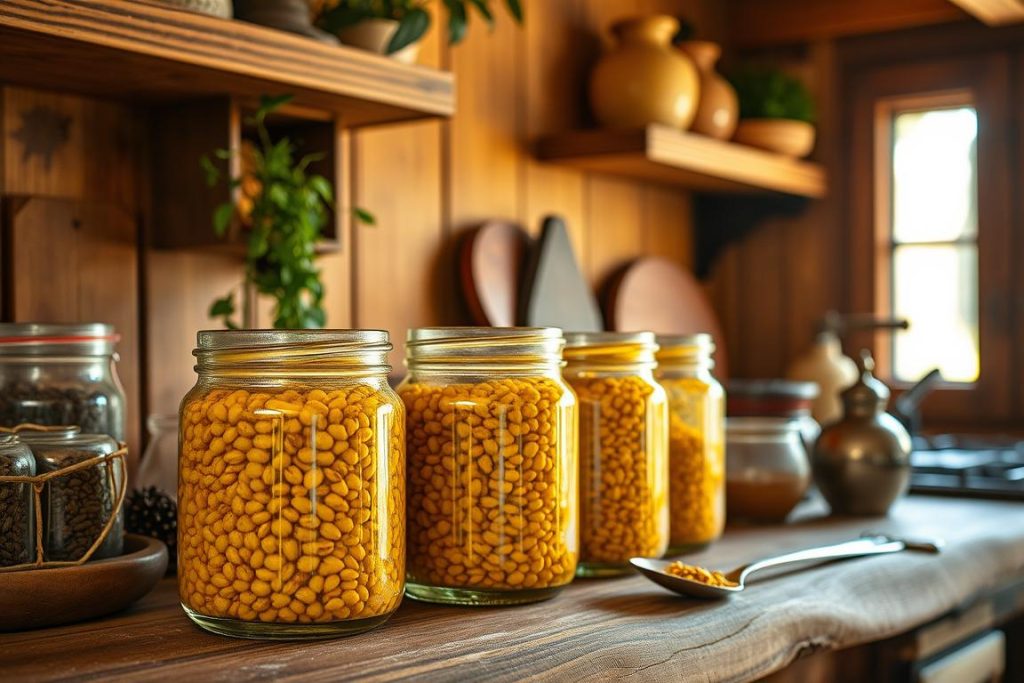
By using these easy storage tips, you can enjoy your homemade mustard caviar for weeks. This lets you enjoy the great taste and texture of this Artisanal Product for more time.
Creative Variations of Mustard Caviar
In the world of Culinary Innovations, mustard caviar is a blank canvas for chefs. They can add spices, herbs, or even fruits to create new flavors. This makes it a great base for experimenting with different tastes.
Spicy Mustard Caviar Recipes
For a spicy kick, try adding sriracha, cayenne pepper, or habanero to mustard caviar. This makes it perfect for grilled meats or as a topping for tacos and burgers. It adds a bold, fiery taste.
Herb-infused Options
Adding fresh herbs like rosemary, thyme, or a mix of chives, dill, and parsley can enhance mustard caviar. These herbs can make it taste more sophisticated. They pair well with roasted veggies or pan-seared fish.
Adding Fruits for Sweetness
Adding fruits like diced apples, pears, or a bit of citrus can balance out the mustard’s boldness. This sweet and savory mix is great on canapés, salads, and cheese plates.
The fun of Culinary Innovations is trying new things. Mustard caviar is a versatile ingredient that lets you explore many flavors. Whether you like it spicy, herbal, or sweet, there’s always a way to make it your own.
Mustard Caviar in Popular Cuisine
Mustard caviar is a tasty and versatile food that’s becoming popular worldwide. It’s loved in French cooking and American dishes. This fancy condiment is now a favorite for those who love good food.
Mustard Caviar in French Gastronomy
In French cooking, mustard caviar is a known favorite. It adds depth to dishes that are part of France’s Specialty Foods tradition. Chefs use it in steak tartare, duck confit, and seafood dishes.
Its texture and sweetness make these dishes special. It brings a touch of Ethical Gastronomy to every bite.
Use in American Dishes
In America, mustard caviar is also a hit. It’s used in gourmet burgers and fancy salads. It adds a unique flavor to many Specialty Foods dishes.
It’s great on seared scallops or in a roasted vegetable medley. Mustard caviar has become a key ingredient in fine cooking. It delights people’s taste buds everywhere.
Cooking Terms You Should Know
Learning to make mustard caviar means knowing some key cooking terms. We’ll explore the science of emulsification and other important techniques. These will help you improve your Culinary Innovations and make your Gourmet Condiments even better.
Emulsification Explained
Emulsification is at the core of mustard caviar. It’s about mixing two liquids that don’t usually go together, like oil and water. This creates a smooth, creamy texture. For mustard caviar, we mix the mustard’s strong oils with something sweet like honey or sugar.
This mix ensures the caviar-like beads stay in shape. They also get the right feel in your mouth.
Other Relevant Terms
- Reduction: This is when you simmer a liquid to make its flavors stronger and its texture thicker.
- Seasoning: Adding salt, pepper, and spices to make a dish taste better.
- Garnish: A decorative item added to a dish to make it look good and taste even better.
- Canapé: A small, easy-to-eat snack, often served as a starter or finger food.
Knowing these basic Culinary Innovations lets you make Gourmet Condiments with skill and confidence. Learning how to make mustard caviar opens up a lot of possibilities. It lets you try new things and make your dishes even more special.
Tailoring Mustard Caviar to Dietary Needs
When it comes to Vegan Caviar and other Plant-Based Delicacies, it’s important to meet different dietary needs. Luckily, mustard caviar can be adjusted to fit many diets. This way, everyone can enjoy its unique taste and texture.
Gluten-Free and Vegan Options
For those on a gluten-free diet, just use gluten-free mustard instead of regular mustard. Many brands offer gluten-free mustards that work great in homemade recipes. For vegan guests, swap honey or sugar with maple syrup or another plant-based sweetener.
- Opt for gluten-free mustards to make a gluten-free mustard caviar
- Use maple syrup or other vegan sweeteners in place of honey or sugar for a vegan-friendly version
Adjusting for Allergies
When making mustard caviar, it’s important to consider food allergies. People allergic to mustard should not eat it. But for nut, soy, or dairy allergies, you can make simple changes. Use a neutral vegetable oil instead of nut oils, skip soy sauce, and avoid dairy like cream or yogurt.
- Avoid mustard caviar entirely for those with a mustard allergy
- Substitute neutral vegetable oil for nut-based oils
- Omit soy sauce for soy allergies
- Skip dairy-based ingredients like cream or yogurt for dairy allergies
By thinking about your guests’ dietary needs, you can make sure everyone enjoys Vegan Caviar and other Plant-Based Delicacies. It’s all about making delicious food that everyone can enjoy.
Typography of Mustard: Color and Taste
Choosing the right mustard is crucial for making tasty Flavor Explorations like mustard caviar. Mustards vary in color, from bright yellow to deep brown. Each type has its own flavor, adding depth to your Specialty Foods.
Differentiating Between Yellow, Dijon, and More
There are several types of mustard used in cooking:
- Yellow Mustard – The classic American mustard, known for its bright, tangy taste and yellow color.
- Dijon Mustard – From Dijon, France, it has a smoother taste with a hint of bitterness.
- Brown Mustard – Known as Indian or Chinese mustard, it’s very spicy and flavorful.
- Whole Grain Mustard – It has visible mustard seeds, offering a unique texture and milder taste.
Flavor Nuances with Various Mustards
The type of mustard you pick can change the taste of your mustard caviar. Yellow mustard gives a familiar taste, while Dijon adds sophistication. Brown mustard adds spice, and whole grain mustard brings a special texture. Trying different mustards can lead to exciting Flavor Explorations in your Specialty Foods.
| Mustard Type | Color | Flavor Profile |
|---|---|---|
| Yellow Mustard | Bright yellow | Tangy, slightly sweet |
| Dijon Mustard | Deep brown | Smooth, sophisticated, with a hint of bitterness |
| Brown Mustard | Dark brown | Intense heat, robust flavor |
| Whole Grain Mustard | Beige with visible seeds | Slightly milder taste, delightful texture |
Exploring the different Flavor Explorations of mustard is key to making great Specialty Foods like mustard caviar. Knowing the differences in each type can help you create memorable dishes.
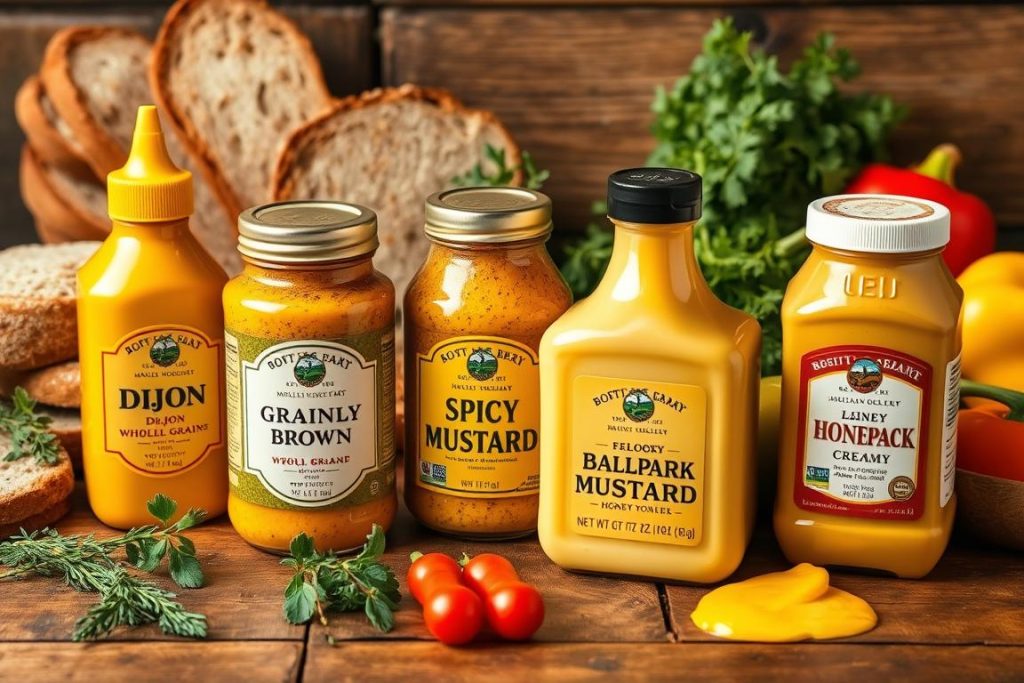
Common Mistakes to Avoid When Making Mustard Caviar
Making the perfect Culinary Innovations like mustard caviar needs care and focus. It might seem easy, but there are common mistakes to avoid. Knowing these can help you make better Artisanal Products and enjoy homemade mustard caviar’s taste and texture.
Overcooking the Mixture
One key step in making mustard caviar is cooking it right. If you heat it too much, it can become grainy and unpleasant. It’s important to stick to the recipe and watch the cooking time. This way, you get the right consistency without overcooking.
Skipping Taste Tests
Seasoning is crucial for Culinary Innovations like mustard caviar. It’s good to taste the mixture often and adjust the seasoning. This helps you get the flavor just right, balancing sweetness, tanginess, and spice to your liking.
- Regularly taste the mixture to ensure it’s meeting your desired flavor profile.
- Add extra sweetener or vinegar as needed to achieve the right balance.
- Experiment with different types of mustard to find your preferred taste.
By avoiding these common mistakes and staying careful, you can make Artisanal Products that show off homemade mustard caviar’s artistry. With practice and attention to detail, you’ll soon be making this tasty condiment that can enhance any dish.
Mustard Caviar: A Budget-Friendly Gourmet Touch
Making your own mustard caviar at home is a fun and affordable way to enjoy gourmet flavors. It’s a secret that homemade mustard caviar can make your meals fancy without costing a lot.
Cost-Effectiveness Compared to Store-Bought
Buying mustard caviar from fancy stores can be very pricey. But making it yourself can save you a lot of money. You just need mustard seeds, vinegar, and sweeteners, which are cheap and easy to find.
High-Quality Ingredients on a Budget
One big plus of making your own mustard caviar is choosing top-notch ingredients. You can pick Sustainable Caviar and Ethical Gastronomy options like premium mustards and fresh herbs. This makes your caviar taste better and ensures it’s made with care.
| Homemade Mustard Caviar | Store-Bought Mustard Caviar |
|---|---|
| Cost-effective, with the ability to control ingredient quality | Often expensive, with limited control over ingredient sourcing |
| Allows for customization of flavors and textures | Limited to pre-determined flavor profiles |
| Promotes Sustainable Caviar and Ethical Gastronomy | May not prioritize sustainability or ethical production |
By making your own mustard caviar, you can enjoy fancy flavors without spending a lot. With some effort and the right ingredients, you can add a special touch to your cooking without breaking the bank.
Engaging with Your Guests: Presentation Tips
Improving the dining experience is more than just the taste of your homemade mustard caviar. How you present it can leave a lasting impression on your guests. By carefully arranging your mustard caviar and adding garnishes, you can show off its beauty. This will encourage your guests to enjoy every bite.
Arranging on a Platter
Choose a visually appealing platter or dish for serving mustard caviar. A shallow, round plate or a wooden board adds a rustic touch. Place the mustard caviar in small portions for easy scooping. Try different patterns like circles or swirls to highlight its texture and colors.
Garnishes that Compliment Mustard Caviar
Enhance your mustard caviar’s presentation with garnishes. Fresh herbs like dill, chives, or parsley add color and flavor. Thin lemon or lime slices offer a refreshing contrast. Edible flowers like nasturtiums or micro greens add elegance. These touches not only make your mustard caviar look great but also delight your guests’ senses, making it the highlight of the meal.
